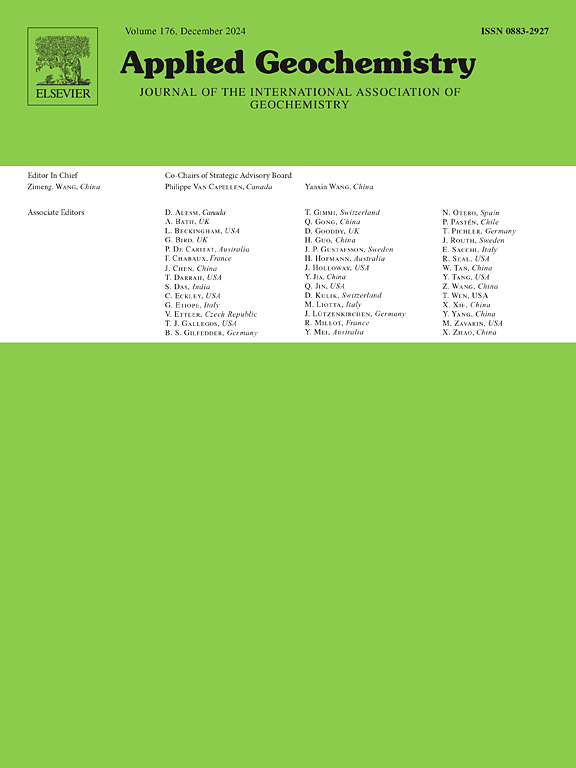Hydrochemical characteristics and evolution of geothermal waters in western Yunnan, China based on self-organizing map and hydrogeochemical simulation
IF 3.1
3区 地球科学
Q1 GEOCHEMISTRY & GEOPHYSICS
引用次数: 0
Abstract
Ascertaining the hydrochemical features of geothermal waters and their spatial distribution and the associated hydrogeochemical regimes in complex geothermal areas with intense tectonic and hydrothermal activities is important for hydrothermal resource management, but still remains difficult. Western Yunnan, located in the Mediterranean–Himalayan geothermal zone and collision zone between the Indian and Eurasian plates with diverse hydrothermal activities and temperatures, is an ideal area for such study, which was realized by utilizing self-organizing map method (SOM), hydrogeochemical simulations and solute geothermometers in this study. The combined results show that four geothermal water groups with different hydrogeochemical features were discerned. The Group 1 geothermal waters are HCO3–Na type, and they have relatively high reservoir temperatures ranging from 170 to 200 °C and moderate d-excess (d-excess = δ2H-8∗δ18O), whose major components originate from alkaline feldspar dissolution during the deep circulation. The hydrogeochemical type of Group 2 is HCO3–Ca–Mg with the largest d-excess and the lowest reservoir temperatures ranging from 50 to 100 °C, and carbonate mineral dissolutions are the source of their major components. Group 3 is characterized by high acidity and abundant SO4, which is from shallow groundwaters heated by high-temperature steam comprising H2S, with the smallest d-excess due to strong hydrothermal alteration. Group 4 (Cl–HCO3–Na/HCO3–Cl–Na type) possesses a smaller d-excess and the highest reservoir temperatures ranging from 160 to 240 °C, resulting from deep NaCl-type parent fluid replenishment under the influence of magmatic input. During the upward migration, alkaline feldspar dissolution followed by extensive steam loss induces elevated concentrations. Furthermore, CO2 degassing is another vital process that affects geothermal waters evolution at high temperatures. In this study, coupling SOM network clustering and hydrogeochemical simulation sheds new light on the extraction of hydrogeochemical characteristics and evolution information.

求助全文
约1分钟内获得全文
求助全文
来源期刊

Applied Geochemistry
地学-地球化学与地球物理
CiteScore
6.10
自引率
8.80%
发文量
272
审稿时长
65 days
期刊介绍:
Applied Geochemistry is an international journal devoted to publication of original research papers, rapid research communications and selected review papers in geochemistry and urban geochemistry which have some practical application to an aspect of human endeavour, such as the preservation of the environment, health, waste disposal and the search for resources. Papers on applications of inorganic, organic and isotope geochemistry and geochemical processes are therefore welcome provided they meet the main criterion. Spatial and temporal monitoring case studies are only of interest to our international readership if they present new ideas of broad application.
Topics covered include: (1) Environmental geochemistry (including natural and anthropogenic aspects, and protection and remediation strategies); (2) Hydrogeochemistry (surface and groundwater); (3) Medical (urban) geochemistry; (4) The search for energy resources (in particular unconventional oil and gas or emerging metal resources); (5) Energy exploitation (in particular geothermal energy and CCS); (6) Upgrading of energy and mineral resources where there is a direct geochemical application; and (7) Waste disposal, including nuclear waste disposal.
 求助内容:
求助内容: 应助结果提醒方式:
应助结果提醒方式:


